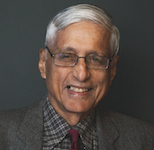"Why Gandhi's pen halted"
“I once sat down to write a thesis on India as a protagonist of nonviolence. But as I proceeded with my writing, I could not go on. I had to stop.”
Gandhi said this in November 1946 in Noakhali (now in Bangladesh), where he was trying to tackle communal violence, adding that his abandoned attempt to showcase India as a leader in nonviolence had been made in Pune during a two-year period of detention, between 1942 and 1944 (Harijan, 8.12.46; Collected Works 86: 134).
Though not quite explaining why he "had to stop", Gandhi went on to contrast "historical Hinduism with its untouchability, superstitious worship of stocks and stones, animal sacrifice, and so on" with a nobler "Hinduism of the Gita, the Upanishads and Patanjali's Yoga Sutra."
But the conclusion is inescapable. Gandhi's pen stopped in Pune because his mind saw images of his people — all his people, irrespective of religion — turning easily, almost instinctively, to violence.
Seventy-one years later, we see these images 24x7. Citizens freely and repeatedly slap persons who annoy them. A policeman is apt to hit or push a citizen before posing a question. Handicapped children in institutions are routinely beaten. Mobs corner and beat up a helpless individual who differs from them in appearance or habits or has the insolence to want dignity once in a lifetime, like wanting to ride a horse for his marriage. Social media effortlessly practises verbal violence and at times extols physical violence.
Gandhi ensured that India's fight for independence from the British remained largely nonviolent. It was quite a feat, but he was unable to make his people nonviolent with one another. That is why his pen stopped during the Pune detention.
Several years earlier, in 1936, when an influential African-American delegation led by Dr Howard Thurman called on Gandhi in Bardoli in Gujarat and discussed nonviolence with him, Gandhi told them:
"Well, if it comes true it may be through the African-Americans that the unadulterated message of non-violence will be delivered to the world." (Harijan, 14 March 1936; 62: 202). In other words, already in 1936, Gandhi seemed to think that more than India, the African-Americans of the US were likely to lead in demonstrating nonviolence. When in the late 1950s and the early 1960s, Martin Luther King Jr and his associates won their remarkable successes with nonviolence, Gandhi's sentence seemed vindicated.
In the 1946-47 winter, another African-American, William Stuart Nelson of Howard University, visited Gandhi and asked why India was seeing large-scale violence despite Gandhi's long effort for nonviolence. Gandhi's reply was to the effect that while many Indians had imbibed his message of "Fear not", most had rejected the allied teaching, "Hate not".
For many, hating the British gave enjoyment, but that led to an inevitable and easy next step: hating fellow-Indians. Hindus and Muslims became enthusiastic haters of one another. Not everyone, not the majority, but sections large enough to produce the great killings of the 1946 autumn, and the greater killings of 1947.
Since then, independent India has seen — among other sprees of violence — the 1983 massacre in Nellie in Assam, the 1984 killings of Sikhs, the killings of Muslims in 1992-93, and the Gujarat slaughter of 2002.
Partition and its killings gave birth to some powerful novels and poetry. Many a scholar sought to analyse the shame of 1947. But when the other day, a group of men gathered in Ludhiana for, as they said, "an atonement" for 1947, it struck me as a profound and fresh development. As one of them put it:
"It was a meeting to introspect and confess that our ancestors did something wrong and we need to accept it. There is no running away from the fact that our people killed their own people, both in India and Pakistan. It was a prayer to seek forgiveness from the families of those who were massacred. We cannot blame politicians or the British alone for whatever happened."
Before this Ludhiana initiative, very little of confession or repentance seemed to follow the Great Killings, whether of 1947, 1983, 1984, 1992-93 or 2002. Nor was there much by way of punishment. A handful of convictions for 1984 and 2002 have been outnumbered by acquittals and outweighed by an unwillingness to prosecute.
Some other countries have faced their pasts more honestly. Ken Burns' and Lynn Novick's 10-part TV documentary, The Vietnam War, is currently informing millions of Americans of the blunders and follies of that war of the 1960s and 1970s, as also of acts of courage and heroism.
People in the US were bitterly divided by that war, which damaged the minds and bodies of hundreds of thousands of Americans, apart from killing 58,000 of them, and apart from the two million or more Vietnamese who perished.
The Vietnam War records the life-journeys of many participants. We see pride and shame, pain at the loss of comrades, injury and illness, contrition, and, in some instances, a measure of healing.
For quite a few, the latter came years after the end of the war, when as American survivors they went, often in fear and hesitation, to the Vietnam Wall in Washington DC, touched the engraved name of a loved fellow-soldier, and cried. Others tried to bond with people in Vietnam whose spirits were similarly wounded.
One reality of our subcontinent's 1947 deaths is their anonymity. We don't have the names of most of the killed. Not even on paper, let alone on granite. The same is sadly true of most victims of subsequent large-scale killings.
Which is why we should aim at least to remember the names of the men and women who these days are killed out of hatred. We should do this not to provoke revenge but for greater reasons: to express grief, to weaken the strand of hate-prompted violence in our society, and to strengthen the thread of insaniyat.
This article first appeared in the Tribune of India
